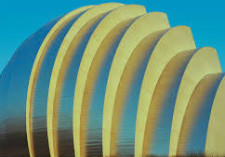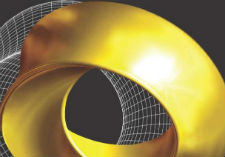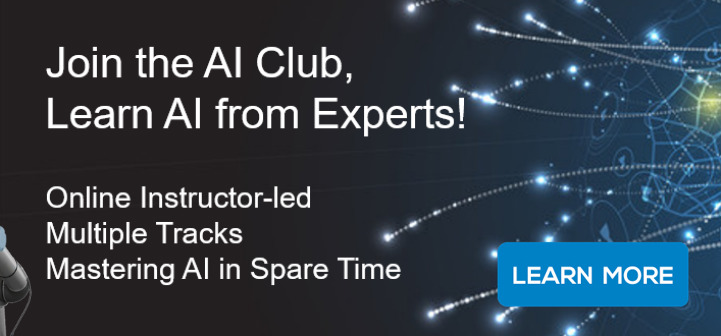 AP Computer Science Principles
AP Computer Science Principles
Computer Science Principles (CSP) curriculum is designed to introduce students to the central ideas of computer science, to instill ideas and practices of computational thinking, and to have students engage in activities that show how computing changes the world. The course is rigorous and rich in computational content, includes computational and critical thinking skills, and engages students in the creative aspects of the field.
The main contents are described as follows.
Unit 1: The Digital Representation of Information
This unit sets the foundation for thinking about the digital (binary) representation of information and how that affects the world we live in. This unit explores the technical challenges and questions that arise from the need to represent digital information in computers and transfer it between people and computational devices. Topics include: the digital representation of information - numbers, text, images, and communication protocols.
Unit 2: The Internet
This unit largely explores the structure and design of the Internet and the implications of those design decisions including the reliability of network communication, the security of data, and personal privacy. Topics include the Internet Protocol (IP), DNS, TCP/IP, cryptography and other security and hacking concerns. The unit also makes the link between the existence of computationally hard problems and encryption schemes that are “hard” for computers to crack.
Unit 3: Programming
This unit introduces students to programming in the JavaScript language and creating small applications (apps) that live on the web. This introduction places a heavy emphasis on understanding general principles of computer programming and revealing those things that are universally applicable to any programming language. Students will program in an online programming environment called App Lab that has many features, chief among them the ability to write JavaScript programs with click-and-drag blocks or just typing text - allowing the user to switch back and forth at will.
Unit 4: Data
In this unit students continue programming and building apps, but now with a heavier focus on data. Being able to extract knowledge from data is an important aspect of CS Principles and in this unit students will do that in a number of ways. Students will write programs that generate data to model or simulate a scenario they wish to investigate. Students will process large lists of data imported from other sources and also pull data from live data APIs. Students will also more fully use App Lab’s cloud data storage capabilities to create databases to use with their own apps.
Unit 5 - Performance Tasks
This unit is primarily set aside to ensure that students have enough time in class to work on and complete their performance tasks for submission.
The course will enable students to gain the skills in Computational Thinking Practices as define by the College Board:
P1: Connecting Computing
Identify impacts of computing.
Describe connections between people and computing.
Explain connections between computing concepts.
P2: Creating Computational Artifacts
Create an artifact with a practical, personal, or societal intent.
Select appropriate techniques to develop a computational artifact.
Use appropriate algorithmic and information management principles.
P3: Abstracting
Explain how data, information, or knowledge is represented for computational use.
Explain how abstractions are used in computation or modeling.
Identify abstractions.
Describe modeling in a computational context.
P4: Analyzing Problems and Artifacts
Evaluate a proposed solution to a problem.
Locate and correct errors.
Explain how an artifact functions.
Justify appropriateness and correctness of a solution, model, or artifact.
P5: Communicating
Explain the meaning of a result in context.
Describe computation with accurate and precise language, notations, or visualizations
Summarize the purpose of a computational artifact.
P6: Collaborating
Collaborate with another student in solving a computational problem.
Collaborate with another student in producing an artifact.
Share the workload by providing individual contributions to an overall collaborative effort.
Foster a constructive, collaborative climate by resolving conflicts and facilitating the contributions of a team member
Exchange knowledge and feedback with a partner or team member.
Review and revise their work as needed to create a high-quality artifact.
 AP Computer Science A
AP Computer Science A
AP Computer Science A is a college-level introductory course in computer programming with Java. This course is designed to serve as the equivalent of a one-‐semester, entry-‐level college course in computer science for students majoring in computer science, engineering, math, the sciences or business. The course emphasizes object-oriented programming methodology with a concentration on problem-solving, through the design and implementation of appropriate algorithms and data structures. In the course, students learn to code fluently in Java, and will use standard Java library classes from the AP Java subset. Students learn to read and understand large programs consisting of several classes and interacting objects, as well as learn about the design and development process leading to such a program. Students also learn to recognize and consider social and ethical implications of computer use.
Students are expected to have strong computer and problem-‐solving skills as they will create and debug original object-‐oriented programs, using Java, to solve problems by using adaptable and reusable algorithmic modules and data structures. Students successfully completing this course are prepared to take the AP Computer Science A Exam.
 AP Calculus BC
AP Calculus BC
This course focuses on applications of limits, differentiation and integration. Numerical approaches (such as Newton’s method, Simpson’s Rule, and Euler’s Method); various techniques of integration; indeterminate forms for limits; and Taylor series are also covered, as well as application of Calculus techniques to parametric and polar representations. Throughout the course, an emphasis is placed on symbolic, graphical and numeric representations, as well as on clear communication of mathematical thinking. Students successfully completing this course are prepared to take the Calculus BC AP Exam which requires use of a graphing calculator.
Recommended: Pre-‐Calculus. After completion of this course, students will be able to
- Work with functions represented in a variety of ways and understand the connections among these representations.
Understand the meaning of the derivative in terms of a rate of change and local linear approximation, and use derivatives to solve a variety of problems. - Understand the relationship between the derivative and the definite integral
- Communicate mathematics both orally and in well-written sentences to explain solutions to problems.
- Model a written description of a physical situation with a function, a differential equation, or an integral.
- Use technology to help solve problems, experiment, interpret results, and verify conclusions.
- Determine the reasonableness of solutions, including sign, size, relative accuracy, and units of measurement.
 AP Statistics
AP Statistics
This course covers the content of one semester of an introductory, non-Calculus-based, college curriculum in Statistics which is often a requirement for college students majoring in the social sciences, health sciences and business. Students will be introduced to the major concepts and tools for collecting, analyzing, and drawing conclusions from data. The course is built around four main topics: exploring data, planning a study, probability as it relates to distribution of data, and inferential reasoning. With the possible exception of probability, most of the material in this course has not been a part of the traditional secondary mathematics curriculum. Students successfully completing this course are prepared to take the Statistics AP Exam which includes use of a graphing calculator.
Prerequisites: C or better in Algebra 2 or higher math course. This course covers the content of one semester of an introductory, non-‐Calculus-‐based, college curriculum in Statistics which is often a requirement for college students majoring in the social sciences, health sciences and business. Students will be introduced to the major concepts and tools for collecting, analyzing, and drawing conclusions from data. The course is built around four main topics: exploring data, planning a study, probability as it relates to distribution of data, and inferential reasoning. With the possible exception of probability, most of the material in this course has not been a part of the traditional secondary mathematics curriculum.
Main Contents:
- Exploring Data
- Modeling Distributions
- Describing Relationships
- Designing Studies
- Probability
- Random Variables
- Sampling Distributions
- Estimating with Confidence
- Testing a Claim
- Comparing Two Populations
- Inference for Categorical Data
- One-Way Analysis of Variance
- Multiple Linear Regression
 AP Calculus AB
AP Calculus AB
This course is intended for students who have a thorough knowledge of analytical geometry and elementary functions in addition to algebra, geometry, and trigonometry. It is a course in single-variable calculus that includes techniques and applications of the derivative, techniques and applications of the definite integral, and the Fundamental Theorem of Calculus. It is equivalent to at least a semester of calculus at most colleges and universities, perhaps to a year of calculus at some. Algebraic, numerical, and graphical representations are emphasized throughout the course.The course includes the application of limits, differentiation and integration. Some techniques of integration and indeterminate forms for limits are also covered. Throughout the course, an emphasis is placed on symbolic, graphical, and numeric representations, as well as on clear communication of mathematical thinking. Students successfully completing this course are prepared to take the Calculus AB AP Exam which requires use of a graphing calculator .
Major Units:
- Limits and Continuity – graphical, numerical, and verbal descriptions of a limit; graphical, numerical, algebraic and verbal evaluation of limits; indeterminate forms; three-part definition of continuity at a point; types of discontinuity; redefining functions to be continuous; piecewise-defined and greatest integer functions; intermediate value and extreme value theorems
- The Derivative: derivative as a limit and rate of change; differentiability; differentiation using the limit definition and through algebraic and graphical shortcuts; the product, quotient and chain rules; tangent lines; derivatives of transcendental and piecewise-defined functions; derivatives of inverse functions; review of conic sections and other planar curves; implicit differentiation; related rates of change
- Derivative Applicatioon: first derivative applications, second derivative applications, graphical construction and analysis, the Mean Value Theorem,
- Anti-Derivatives and Indefinite Integrals: slope fields; differential equations with separation of variables; anti-derivatives with initial conditions; anti-derivatives using the power rule and substitution; anti-derivatives of basic transcendental functions
- The Definite Integral and Applications: Riemann sums; ordering estimations of sums; evaluating definite integrals; areas in the plane; solids of revolution and with other cross-sections using the washers and shells methods; applications to population, finance/economics, fluid dynamics, thermodynamics; the First and Second Fundamental Theorems of Calculus



